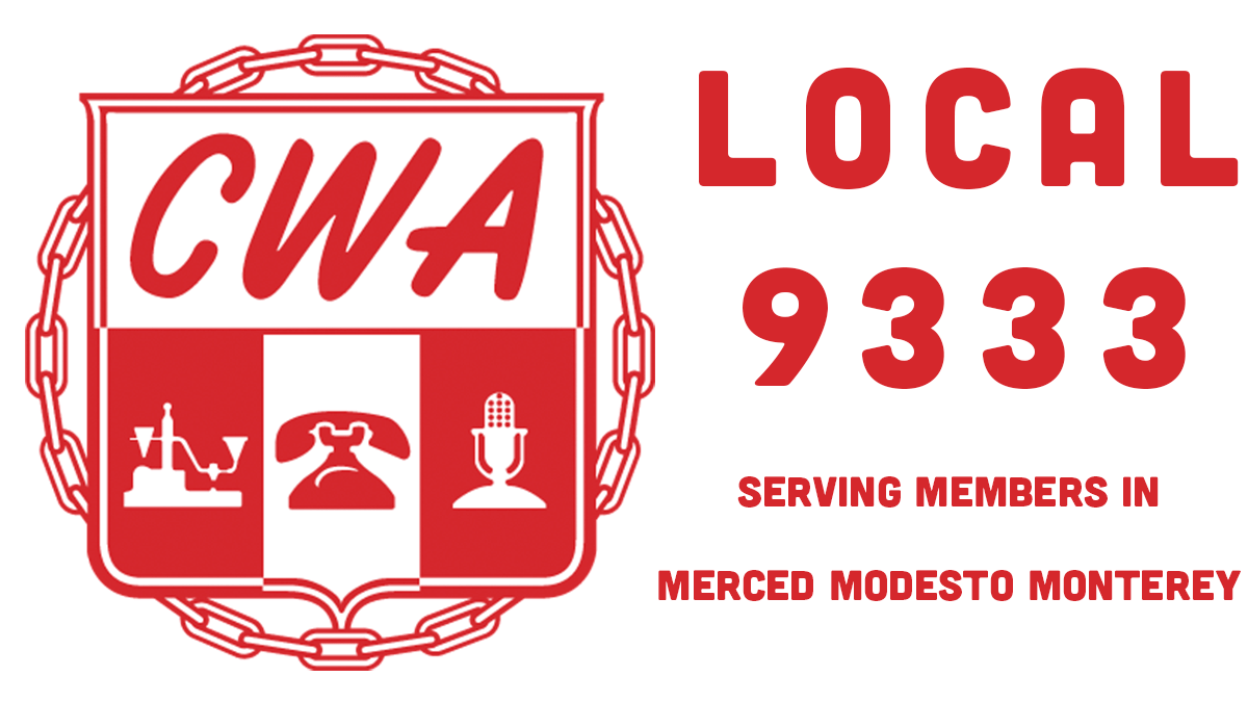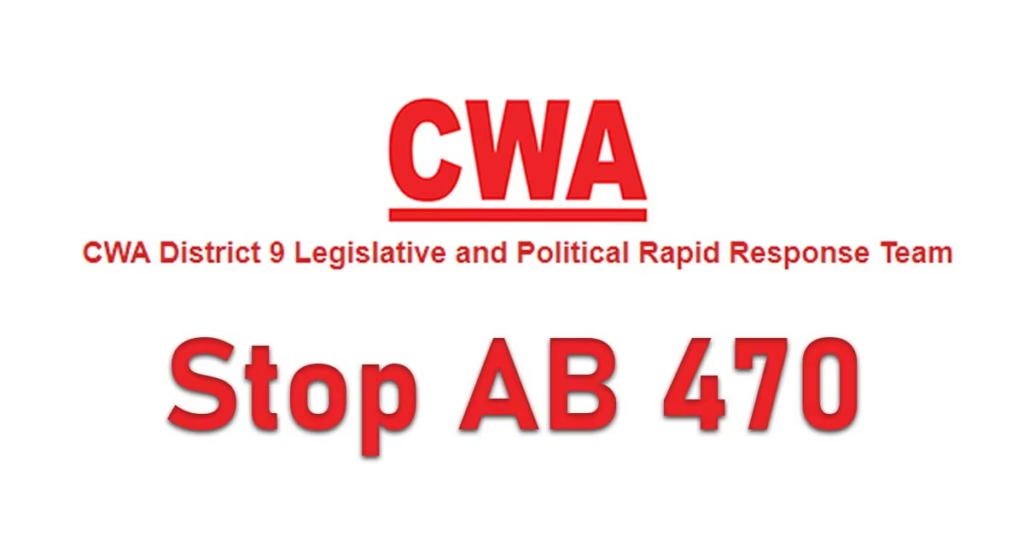Please call your State Assemblymember to Stop this Job Killer Bill
Tell the California State Assembly: Stop AB 470
AB 470 is AT&T’s latest attempt to eliminate the Carrier of Last Resort mandate for all Eligible Telecommunications Carriers including Frontier/ Verizon, the rule that requires Telecommunications Carriers to provide phone service to everyone in its territory. AT&T wants to end this mandate for all Telecoms so they can pick and choose which communities they serve.
AB 470 was supposed to be dead in the Assembly Rules committee, but AT&T lobbied to move this bill forward in the California Assembly. If the bill passes it will terminate service for many underserved communities and eliminate good union jobs. Please call your member of the California State Assembly and tell them to VOTE NO on AB 470.
Here is the link to a Click-to-call page for the CA Assembly. CWA members can enter their information, and they’ll receive a call to connect with their assembly member. Using the Click-to-call page helps get folks to the correct target. Or you may dial direct: (916) 957-3857
The following is an AI summary of AB470:
California AB 470, introduced by Assemblymember Tina McKinnor on February 6, 2025, aims to modernize California’s telecommunications by allowing telephone corporations to relinquish their Carrier of Last Resort (COLR) obligations in certain areas—while ensuring universal access and public safety protection capitolweekly.net+11legiscan.com+11veeto.app+11.
📡 Key Provisions
1. Eligible Areas for COLR Relief
Carriers may shed COLR duties in two types of census blocks:
- Empty blocks: with zero population and no service customers.
- Well‑served blocks: blocks where at least three facilities-based alternative voice providers operate, including a wireline option, with pricing comparable to traditional service caconnectedfuture.org+3counties.org+3veeto.app+3trackbill.com+3calmatters.digitaldemocracy.org+3veeto.app+3billtrack50.com+4legiscan.com+4caconnectedfuture.org+4.
2. Procedural Requirements & Oversight
- The California Public Utilities Commission (CPUC) must create a map by December 15, 2026, identifying “well‑served” areas caconnectedfuture.org+3calmatters.digitaldemocracy.org+3veeto.app+3.
- Carriers must file formal notices and modify their tariffs accordingly—and COLR status ends upon submission billtrack50.com+3legiscan.com+3caconnectedfuture.org+3.
- Customers can challenge claims about alternative service availability. Valid challenges can mandate continued service for a minimum of two years capitolweekly.net+6legiscan.com+6caconnectedfuture.org+6.
- For non‑eligible areas, CPUC has until January 1, 2027 to develop a transition plan with stakeholder input counties.org+5calmatters.digitaldemocracy.org+5billtrack50.com+5.
3. Consumer & Public Safety Protections
The bill includes strong safeguards:
- Public notices, workshops, multilingual materials, and third-party reviews.
- Required offering of affordable broadband plans and alternative voice services in affected zones.
- Infrastructure commitments: expanding fiber deployment, funding digital literacy training, and workforce programs .
It also establishes the Public Safety Agency Technology Upgrade Grant Fund, continuously funded to help first responders update communications systems .
⚖️ Support & Opposition
- Supporters (e.g., California Connected Future, NAACP California‑Hawaii, Capitol Weekly) view AB 470 as a “balanced approach” that ensures modernization, protects emergency services, addresses affordability, and helps bridge the digital divide—especially in underserved communities .
- Opponents, including the California State Association of Counties (CSAC), argue it could let major providers bypass rural obligations, relying on wireless data that might be unreliable. They caution this may leave disconnected areas—particularly in remote or underserved regions—without vital telecommunications access .
🧭 Broader Legislative Context
AB 470 positions California to phase out aging copper landline infrastructure in favor of modern fiber, wireless, and satellite networks—with the CPUC overseeing the shift and protecting universal service. It aligns with recent FCC policies permitting copper retirements but demands stronger state oversight and consumer protections .
In summary, AB 470 charts a multi-year, carefully regulated course toward next-generation communications while embedding consumer, safety, and equity protections. Its future hinges on the fine line between modernizing the network and maintaining essential service for every Californian—no matter where they live




